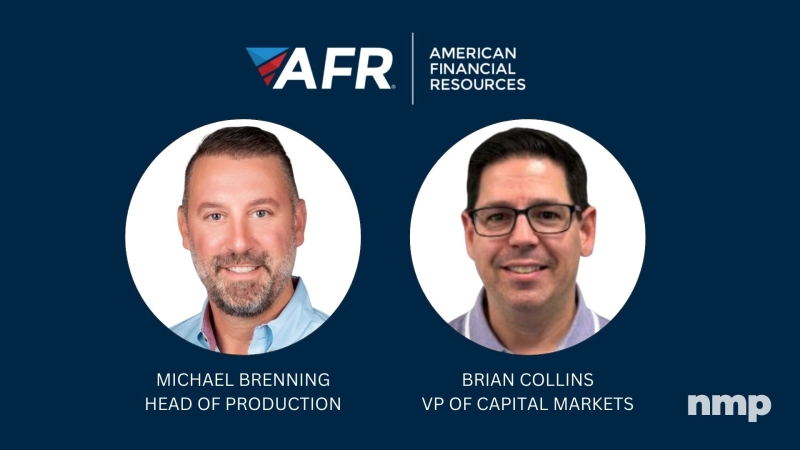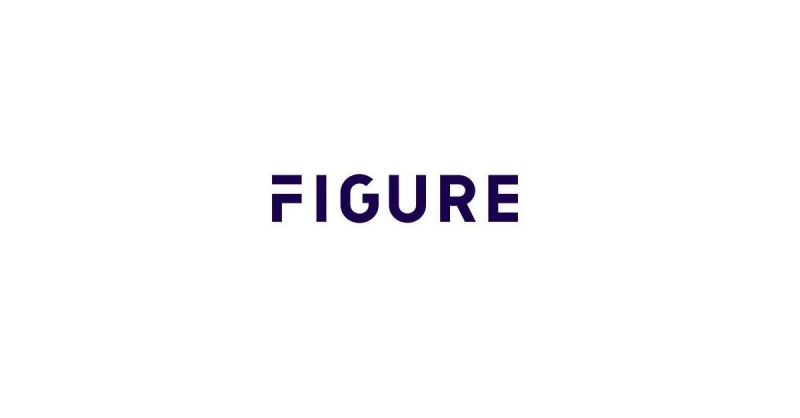Advertisement
Michigan industry appointments update - 06/06/2006
FHA on the rebound!MortgagePress.comFederal Housing Administration
Have you thought about an FHA mortgage
recently?
That's the problem. All too few people have. As recently as 2003,
The Federal Housing Administration (FHA) insured almost 1.4 million
mortgage loans nationally, of which more than 35,000 were in
Pennsylvania. Those numbers fell to just over 816,000 loans
nationally and about 23,000 in Pennsylvania in 2004, and fell even
further in 2005 to about 523,000 nationally and only 14,000 in
Pennsylvania. What happened?
FHA was one of the first New Deal agencies. Founded in 1934 and
folded into the U.S. Department of Housing and Urban Development
(HUD) in 1965, FHA insures lenders against loss in the event of
default by the borrower. FHA offered the nation's first long-term,
amortizing mortgage, and with its less-restrictive credit policies
and low down payments, FHA mortgages were the means by which
millions of families bought their first homes. To date, FHA has
insured more than 33 million mortgages.
In recent years, FHA has faced stiff competition from a vast
array of conventional loan products and non-prime loan products
created to serve FHA's traditional market. FHA also has been slow
to adapt its policies and procedures to meet the standard being set
by conventional and non-prime loans for fast, flexible processing.
That meant that lenders often had to be able to do business in two
different ways: one for FHA and another for everyone else. The good
news, though, is that FHA is responding with major changes aimed at
reclaiming its share of the market.
The new FHA
FHA has set out on an aggressive course of action aimed at meeting
the needs of today's homebuyers and addressing competing loan
products. First, FHA is overhauling its operating procedures to
make them compatible with conventional and non-prime loan
processes.
Engram Lloyd, director of HUD's Philadelphia Homeownership
Center that administers FHA loans in Pennsylvania, noted, "Our goal
is to make processing an FHA loan seamless with processing a
conventional loan. If a lender is processing a conventional loan
for a borrower and then decides that an FHA loan is what the
borrower needs, they don't have to start all over with a new
appraisal and other forms. They can use the same documentation
they've already gathered."
Secondly, FHA has developed some new products aimed at
particular niches of the mortgage market. Borrowers in today's
mortgage market have different needs that conventional loans are
aimed at meeting. FHA can no longer afford to just sit on the
sidelines and offer the same products it has traditionally
offered.
Why is FHA making these changes?
If the conventional and non-prime markets are serving FHA's
traditional customers, why should FHA try to take them back? Some
might say that if borrowers are being served by other loans
products, maybe FHA is no longer needed. In fact, while alternative
loan products are more readily available today, they may not be the
best product for the borrower. The issue is not just how flexible a
loan is or how easy it is to process, but whether that is the best
loan for the borrower. Many of the conventional loan products (and
especially the non-prime products) carry hidden fees, prepayment
penalties, higher mortgage insurance premiums and even higher
interest rates. Many borrowers find that all of the flexibility
that their loan offered at application vanishes after the loan has
closed. FHA loans, on the other hand, have no prepayment penalties
and are fully assumable. Further, they can often be less costly for
the borrower than other loans, because FHA fully insures lender
losses and offers low mortgage insurance premiums—even for
borrowers with lower credit scores and incomes.
FHA also offers better foreclosure prevention measures for
borrowers in financial difficulty than many conventional and
non-prime products. Foreclosure on an FHA loan is a last resort,
not a preferred option. FHA believes that most lenders want to
place their customers not just in any loan, but in the best loan
for them. FHA is trying to prove to lenders that the best loan just
may be an FHA product.
The new FHA appraisal process
Until January of this year, FHA had its own property condition and
repair standards, its own appraisal form and other forms used only
in an FHA loan transaction. This appraisal process invariably led
to requiring a higher level of repairs than would be the case on a
conventional loan. A higher property condition standard meant more
repairs, which meant more expense for the seller and delayed
closings. In some of today's hot housing markets, many sellers
would list their properties with a no-FHA provision.
While the higher repair standard was ostensibly aimed at
protecting the buyer, FHA realized that it couldn't help borrowers
who never got an FHA mortgage. It also realized that many of its
repair requirements had very little to do with the basic safety and
security of the property. Having its own forms and procedures also
meant that changing a loan to FHA meant getting a new
appraisal.
In January, FHA adopted Fannie Mae's appraisal forms and
protocols that are the industry standard. In addition to
eliminating all FHA-specific forms and using Fannie Mae forms, FHA
adopted the Fannie Mae repair standards. This means that FHA will
no longer require repairs for minor items like leaky faucets or
cracked windows. Minor issues of deferred maintenance, like cracked
sidewalks or worn carpeting, need not be addressed. Tests that were
routinely required by FHA for water quality, termites and flat
roofs have all been eliminated.
Closing costs and automated underwriting
FHA has always had a specific list of allowable and unallowable
closing costs—items that could be charged to the borrower and
items that could not. For example, a borrower could be charged a
loan origination fee, but not an underwriting fee. The seller could
pay the transaction or administrative fee charged by a real estate
agent, but the borrower could not. In addition to confusing many of
the participants in the transaction, these requirements made an FHA
borrower less attractive to a seller. Ultimately, someone had to
pay these fees, and, too often, the seller got stuck with them.
That's all changed, now. Earlier this year, FHA eliminated its
list of allowable and unallowable closing costs. The only
restriction, now, is essentially the same as that for other
loans—closing costs must meet applicable federal and state
disclosure regulations and must be customary and reasonable for the
area.
Automated underwriting is another area where FHA is meeting the
challenge of the conventional loan process. Most conventional loans
are scored through an automated underwriting system, usually
Freddie Mac's Loan Prospector or Fannie Mae's Desktop Underwriter.
Now, FHA loans can be scored through these same systems. The only
difference is that FHA loans are scored against FHA's TOTAL
(Technology Open To Approved Lenders) scorecard, while conventional
loans are scored against Freddie Mac's or Fannie Mae's proprietary
scorecards. The process is exactly the same for the lender using
them.
Lender insurance
In the past, FHA relied on lenders to take borrower applications,
process and close loans and even enter data into FHA's automated
systems. Only FHA, however, could actually insure the loan. This
meant that after the loan had closed, the lender had to mail a
paper file to the Philadelphia Homeownership Center, where a manual
document check would be performed.
If everything checked out, FHA would perform the final data
entry and insure the loan. If there were missing documents,
signatures or dates, however, FHA would mail the paper file back to
the lender for correction. The lender would make the corrections,
mail back the paper file and start the process all over.
Since both the lenders and FHA relied on express mail services
to send the files back and forth, this was an expensive process.
Plus, like any item that is mailed, there was always the
possibility for files to be lost or misdirected. It also held up
the insurance of the loan and its sale on the secondary market.
Beginning in January, all of this changed. FHA now allows the
lender to insure the loan right in its office. Instead of FHA
conducting the document check, it is now performed by the lender.
Instead of sending the file back to the lender for corrections, the
lender makes them.
As Engram Lloyd noted, "We trust the lenders to process and
close FHA loans on their own, so it only makes sense to let them
insure them, as well. The old process cost lenders both time and
money—the last thing we want to do in today's competitive
mortgage market."
Not all lenders will qualify for lender insurance. Only those
lenders whose default and claim rates on FHA loans fall below
certain thresholds are eligible. Those who do not meet this
criterion will still have to send paper files to the Philadelphia
Homeownership Center for insurance. Nevertheless, FHA estimates
that more than 85 percent of all FHA lenders will qualify for this
option.
New FHA products
It's not just a matter of changing the process. FHA is offering new
products and improving old ones. FHA has overhauled its combination
purchase/rehabilitation mortgage known as Section 203(k) (named
after the section of the National Housing Act authorizing it) to
make it more flexible and easier to use.
FHA is now offering a refinance loan that allows a borrower to
take cash out of the property, up to a 95 percent loan-to-value
ratio (LTV). FHA has also made changes to its other refinance
products to make them easier to use. FHA's reverse mortgage
program, the Home Equity Conversion Mortgage (HECM), is one product
where FHA is still the market leader and is making improvements to
keep it there.
Streamlined 203(k)
FHA created its Section 203(k) program many years ago. It
required an inspection of the home by a qualified inspector (a
203[k] consultant), the development of a detailed work write-up
and, usually, the services of a general contractor to oversee the
work. Repairs had to meet a minimum cost of $5,000. For major
rehabilitation projects involving structural repairs or additions,
these procedures still make sense; but, most homeowners lack the
time and expertise to take on a project like this on their own.
For smaller projects, these elaborate procedures represented
overkill and served to discourage the use of the program. FHA has
addressed this issue with the development of the Streamlined 203(k)
program. Under Streamlined 203(k), there is no minimum repair
requirement and a cap of $35,000. Neither a 203(k) consultant nor a
detailed work write-up is required. Like the original 203(k)
program, all repairs are completed after the loan closes.
The program is aimed at completing repairs that may be too
expensive for homeowners to take on with their own money, but which
are relatively uncomplicated—a new roof, new heating or air
conditioning systems, kitchen renovations, etc. The new program can
also work hand-in-glove with FHA's new appraisal process.
As Michael Levine, deputy director of the Philadelphia
Homeownership Center, noted, "The new appraisal protocol should
eliminate the need for minor repairs. When there are more serious
repairs that are needed, however, Streamlined 203(k) provides the
homebuyer with an option that will accomplish the repairs without
costing the seller any money or delaying closing."
95 percent cash-out and other refinance loan
changes
For years, FHA has offered a cash-out refinance program. The
maximum mortgage, however, was limited to a combined (the FHA first
mortgage and any other mortgages) LTV of 85 percent. In 2005, FHA
introduced a new cash-out product. This loan permits borrowers to
obtain an FHA first mortgage at a 95 percent LTV. Subordinate
financing may remain in place and is not included in the LTV.
Standard FHA underwriting and qualification standards apply. In
addition, the homeowner must have owned the property as a principal
residence for at least 12 months. If there was an existing mortgage
on the property, the last 12 payments must have been made within
the month due.
FHA has also overhauled its other refinance programs by making
changes that simplify and speed up processing. Borrowers no longer
have to make the payment on their old loan for the month in which
they close on their new loan (the "no skipped payment" rule). On
FHA non-credit qualifying streamline refinances, late charges and
escrow shortages may now be included in the new mortgage amount.
FHA hopes that these and other changes will make an FHA loan the
choice for refinancing.
HECM
One bright spot for FHA has been HECM, its reverse mortgage program
for senior citizens. Under HECM, senior citizens who own their
homes can tap into their equity by taking out a line of credit,
receiving a lump sum amount, receiving regular monthly payments or
a combination of these. The senior citizen makes no monthly
payments and can never be forced to leave his home.
FHA's HECM is the most popular reverse mortgage product on the
market, and loan volume is increasing every year. In 2001, FHA
insured 8,149 HECMs nationally and 320 in Pennsylvania. In 2005,
FHA insured 48,365 HECMs nationally and 1,215 in Pennsylvania.
FHA seeks to maintain its dominant place in the reverse mortgage
industry by making it easier for lenders to participate and by
adding a HECM refinance product. Many HECM borrowers who closed on
HECMs years ago have seen the value of their properties
substantially increase since then. With FHA's HECM refinance
program, these homeowners can refinance their current HECM into a
new HECM and tap the additional equity that they have accrued.
For more information, visit www.fha.gov.
About the author




